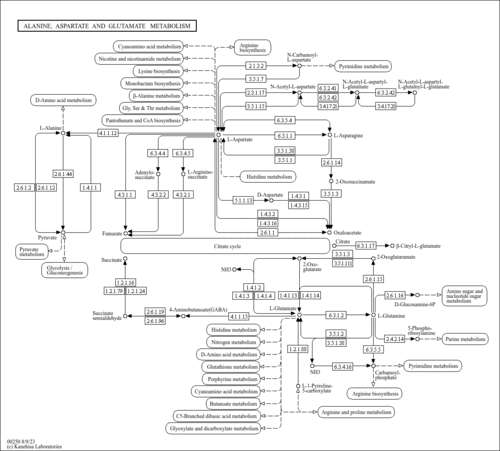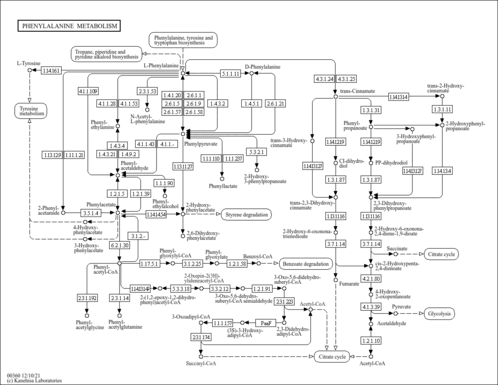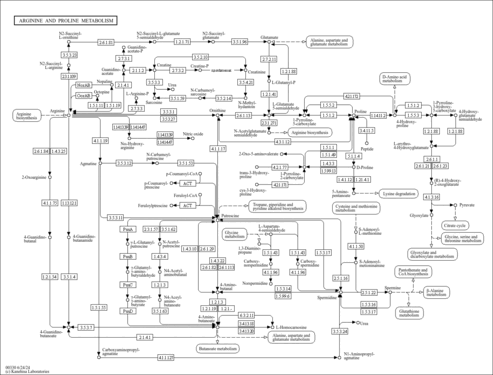| Description | Ammonia, also known as NH3 or amoniaco, belongs to the class of inorganic compounds known as homogeneous other non-metal compounds. These are inorganic non-metallic compounds in which the largest atom belongs to the class of 'other non-metals'. Ammonia is a colourless alkaline gas and is one of the most abundant nitrogen-containing compounds in the atmosphere. It is an irritant with a characteristic pungent odor that is widely used in industry. Inasmuch as ammonia is highly soluble in water and, upon inhalation, is deposited in the upper airways, occupational exposures to ammonia have commonly been associated with sinusitis, upper airway irritation, and eye irritation. Acute exposures to high levels of ammonia have also been associated with diseases of the lower airways and interstitial lung. Small amounts of ammonia are naturally formed in nearly all tissues and organs of the vertebrate organism. Ammonia is both a neurotoxin and a metabotoxin. In fact, it is the most common endogenous neurotoxin. A neurotoxin is a compound that causes damage to neural tissue and neural cells. A metabotoxin is an endogenously produced metabolite that causes adverse health effects at chronically high levels. Ammonia is recognized to be central in the pathogenesis of a brain condition known as hepatic encephalopathy, which arises from various liver diseases and leads to a build-up ammonia in the blood (hyperammonemia). More than 40% of people with cirrhosis develop hepatic encephalopathy. Part of the neurotoxicity of ammonia arises from the fact that it easily crosses the blood-brain barrier and is absorbed and metabolized by the astrocytes, a population of cells in the brain that constitutes 30% of the cerebral cortex. Astrocytes use ammonia when synthesizing glutamine from glutamate. The increased levels of glutamine lead to an increase in osmotic pressure in the astrocytes, which become swollen. There is increased activity of the inhibitory gamma-aminobutyric acid (GABA) system, and the energy supply to other brain cells is decreased. This can be thought of as an example of brain edema. The source of the ammonia leading to hepatic encaphlopahy is not entirely clear. The gut produces ammonia, which is metabolized in the liver, and almost all organ systems are involved in ammonia metabolism. Colonic bacteria produce ammonia by splitting urea and other amino acids, however this does not fully explain hyperammonemia and hepatic encephalopathy. The alternative explanation is that hyperammonemia is the result of intestinal breakdown of amino acids, especially glutamine. The intestines have significant glutaminase activity, predominantly located in the enterocytes. On the other hand, intestinal tissues only have a little glutamine synthetase activity, making it a major glutamine-consuming organ. In addition to the intestine, the kidney is an important source of blood ammonia in patients with liver disease. Ammonia is also taken up by the muscle and brain in hepatic coma, and there is confirmation that ammonia is metabolized in muscle. Excessive formation of ammonia in the brains of Alzheimer's disease patients has also been demonstrated, and it has been shown that some Alzheimer's disease patients exhibit elevated blood ammonia concentrations. Ammonia is the most important natural modulator of lysosomal protein processing. Indeed, there is strong evidence for the involvement of aberrant lysosomal processing of beta-amyloid precursor protein (beta-APP) in the formation of amyloid deposits. Inflammatory processes and activation of microglia are widely believed to be implicated in the pathology of Alzheimer's disease. Ammonia is able to affect the characteristic functions of microglia, such as endocytosis, and cytokine production. Based on these facts, an ammonia-based hypothesis for Alzheimer's disease has been suggested (PMID: 17006913 , 16167195 , 15377862 , 15369278 ). Chronically high levels of ammonia in the blood are associated with nearly twenty different inborn errors of metabolism including: 3-hydroxy-3-methylglutaryl-CoA lyase deficiency, 3-methyl-crotonylglycinuria, argininemia, argininosuccinic aciduria, beta-ketothiolase deficiency, biotinidase deficiency, carbamoyl phosphate synthetase deficiency, carnitine-acylcarnitine translocase deficiency, citrullinemia type I, hyperinsulinism-hyperammonemia syndrome, hyperornithinemia-hyperammonemia-homocitrullinuria syndrome, isovaleric aciduria, lysinuric protein intolerance, malonic aciduria, methylmalonic aciduria, methylmalonic aciduria due to cobalamin-related disorders, propionic acidemia, pyruvate carboxylase deficiency, and short chain acyl CoA dehydrogenase deficiency (SCAD deficiency). Many of these inborn errors of metabolism are associated with urea cycle disorders or impairment to amino acid metabolism. High levels of ammonia in the blood (hyperammonemia) lead to the activation of NMDA receptors in the brain. This results in the depletion of brain ATP, which in turn leads to release of glutamate. Ammonia also leads to the impairment of mitochondrial function and calcium homeostasis, thereby decreasing ATP synthesis. Excess ammonia also increases the formation of nitric oxide (NO), which in turn reduces the activity of glutamine synthetase, and thereby decreases the elimination of ammonia in the brain (PMID: 12020609 ). As a neurotoxin, ammonia predominantly affects astrocytes. Disturbed mitochondrial function and oxidative stress, factors implicated in the induction of the mitochondrial permeability transition, appear to be involved in the mechanism of ammonia neurotoxicity. Ammonia can also affect the glutamatergic and GABAergic neuronal systems, the two prevailing neuronal systems of the cortical structures. All of these effects can lead to irreversible brain damage, coma, and/or death. Infants with urea cycle disorders and hyperammonia initially exhibit vomiting and increasing lethargy. If untreated, seizures, hypotonia (poor muscle tone, floppiness), respiratory distress (respiratory alkalosis), and coma can occur. Adults with urea cycle disorders and hyperammonia will exhibit episodes of disorientation, confusion, slurred speech, unusual and extreme combativeness or agitation, stroke-like symptoms, lethargy, and delirium. Ammonia also has toxic effects when an individual is exposed to ammonia solutions. Acute exposure to high levels of ammonia in air may be irritating to skin, eyes, throat, and lungs and cause coughing and burns. Lung damage and death may occur after exposure to very high concentrations of ammonia. Swallowing concentrated solutions of ammonia can cause burns in the mouth, throat, and stomach. Splashing ammonia into eyes can cause burns and even blindness. |
|---|


